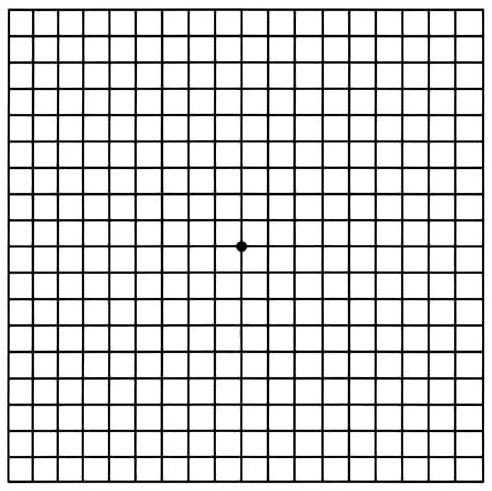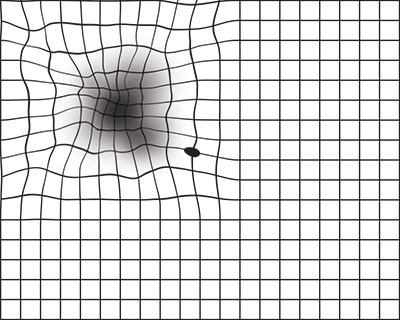Have AMD? Save Your Sight with an Amsler Grid
If you have AMD, a simple, daily routine can help save more of your vision.
Age-related macular degeneration (AMD) is a disease that affects the macula, the tiny part of your eye’s retina that allows you to see detail clearly. The macula gives you central vision, helping you to recognize someone’s face, thread a needle, or see the hands on a clock to tell time.
Why do I need an Amsler grid with dry AMD?
The most common form of AMD is known as the “dry” form. Tiny yellow or white pieces of fatty protein called drusen often form under the retina. Eventually, the macula may become thinner and stop working properly. Dry AMD can eventually turn into “wet” AMD—a more severe form of this disease that can steal more vision. The Amsler grid can help you see this happening before it's too late.
Vision in people with AMD usually diminishes gradually, so they may not be aware of how much sight they have lost. That’s why they must use a special testing tool called an Amsler grid to check their eyesight every day. Using this grid is essential to finding any vision changes that are not obvious.
What is an Amsler grid?
The Amsler grid is a simple square containing a grid pattern and a dot in the middle. When used correctly—once a day, every day—the Amsler grid can show problem spots in your field of vision.

Amsler Grid

For someone with AMD, an Amsler grid may appear to have wavy lines or blank spots.
How do I use an Amsler grid?
To use the Amsler grid, follow these steps once a day, every day:
- Wearing any glasses you normally use to read, hold the grid 12 to 15 inches away from your face in good light.
- Cover one eye.
- Look directly at the center dot with your uncovered eye and keep your eye focused on it.
- While looking directly at the center dot, notice in your side vision if all grid lines look straight or if any lines or areas look blurry, wavy, dark or blank.
- Follow the same steps with the other eye.
If I notice changes while using the Amsler grid, what should I do?
If you notice any areas of the grid that appear darker, wavy, blank or blurry, contact your ophthalmologist right away. They will check to see what’s going on with your AMD, and begin treatment if appropriate.
Remember: doing this simple at-home eye test once a day, every day can help save your vision.